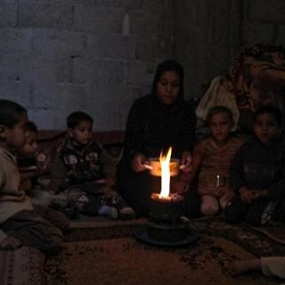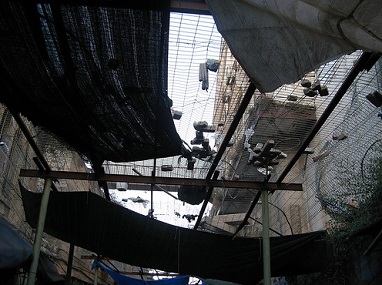Gaza's Electricity Crisis

Under siege for over three years, Gaza's humanitarian crisis continues unabated, Israel's bogus easing doing little to relieve it, including a serious electricity shortage, what the Gisha Legal Center for Freedom of Movement addressed in a May report titled, "Electricity Shortage in Gaza: Who Turned Out the Lights?"
Besides earlier attacks, Cast Lead severely damaged Gaza's sole power plant, putting it on the verge of collapse, exacerbated by inadequate industrial diesel supplies and the destruction of power lines supplying electricity from Israel and Egypt.
As a result, Gaza experiences outages of up to 12 hours a day, severely disrupting "normal functioning of humanitarian infrastructure, including health and education institutions and water and sewage systems, as well as the agricultural sector." In addition, faulty generators at times kill or injure users, an untenable situation because of Israeli attacks and siege, in violation of international law.
Chronology of Gaza's Electricity Crisis
In 2002, Gaza's sole power producer (the private Gaza Power Plant - GPP) became operational. In 2004, its potential capacity was 140 megawatts (MW), its remaining needs bought from Israel. In June 2006, IDF aircraft destroyed GPP's six transformers. In September 2006, the company bought 17 MW of electricity from Egypt.
In November 2006, seven transformers became partially operational, a year later reaching its 80 MW capacity not used because of Israeli fuel restrictions, worsened after the June 2007 siege, preventing entry of equipment, spare parts, other essential items, and enough diesel. By January 2008, operations were at 30% of capacity, causing outages up to eight hours daily - now 12 since January 2010 for lack of fuel and funds.
Gaza needs from 240 - 280 MW, almost half purchased through 10 high-voltage Israeli lines, 17 MW (6 - 7%) coming from Egypt to the Rafah area, and the rest (107 MW) supplied internally when GPP is fully operational, hampered by Gaza's dependence on Israeli diesel, severely restricted under siege.
Presently, about 2.2 million liters a week come in, only 63% of GPP's needs for full capacity - hence, outages.
In 2009, GPP produced about 65 MW, creating a 42 MW shortfall, exacerbated by the grid's poor condition, electricity thus lost after transmission through waste. Worse still is Israel's building materials ban, preventing proper maintenance and rehabilitation. As a result, the Gaza Electricity Distribution Company (GEDCo) has regular, rotating outages throughout the Strip, distributing the burden, not relieving what only a siege lift can accomplish, only possible if public outrage forces world leaders to demand it with harsh recriminations if ignored.


























